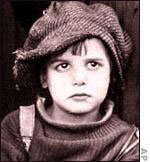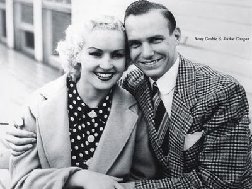
Wood frogs eat a variety of small, forest-floor invertebrates. Omnivorous, the tadpoles feed on plant detritus and algae, and also attack and eat eggs and larvae of amphibians, including those of wood frogs.
The feeding pattern of the wood frog is basically similar to that of other ranids. It is triggered by prey movement and consists of a bodily lunge that terminates with the mouth opening and an extension of the tongue onto the prey. The ranid tongue is attached to the floor of the mouth near the tip of the jaw, and when the mouth is closed, the tongue lies flat, extended posteriorly from its point of attachment.
In the feeding strike, the tongue is swung forward as though on a hinge, so some portion of the normally dorsal and posterior tongue surface makes contact with the prey. At this point in the feeding strike, the wood frog differs markedly from more aquatic Lithobates species, such as the green frog, leopard frog, and bullfrog. The wood frog makes contact with the prey with just the tip of its tongue, much like a toad. A more extensive amount of tongue surface is applied in the feeding strikes of these other frog species, with the result that usually the prey is engulfed by the fleshy tongue and considerable tongue surface contacts the surrounding substrate.
Similar to other northern frogs that enter dormancy close to the surface in soil and/or leaf litter, wood frogs can tolerate the freezing of their blood and other tissues. Urea is accumulated in tissues in preparation for overwintering, and liver glycogen is converted in large quantities to glucose in response to internal ice formation. Both urea and glucose act as cryoprotectants to limit the amount of ice that forms and to reduce osmotic shrinkage of cells. Frogs found in southern Canada and the American midwest can tolerate freezing temperature of -3 to -6 °C. The wood frogs have adopted various physiological adaptations that allow them to tolerate the freezing of 65-70% of total body water. When matter freezes ice crystals form in the cells and break up the structure so when the matter is thawed out the cells are damaged, frozen frogs also need to endure the interruption of oxygen delivery to their tissues as well as strong dehydration and shrinkage of their cells when water is drawn out of cells to freeze. But the Wood frog has adapted traits that avoid their cells being damaged when being frozen, and when being thawed out, they have glucose in their cells that prevent the ice crystals from forming, the wood frog has evolved various adaptations that allow it to effectively combat prolonged ischemia/anoxia and extreme cellular dehydration. One crucial mechanism utilized by the wood frog is the accumulation of high amounts of glucose that act as a cryoprotectant
Frogs can survive many freeze/thaw events during winter if no more than about 65% of the total body water freezes. Wood frogs have a series of seven amino acid substitutions in the sarco/endoplasmic reticulum Ca2+-ATPase 1 (SERCA 1) enzyme ATP binding site that allows this pump to function at lower temperatures relative to less cold-tolerant species (e.g. Lithobates clamitans).
Studies on northern subpopulations found that Alaskan wood frogs had a larger liver glycogen reserve compared to those in more temperate zones of its range. These conspecifics also showed higher enzymatic activity of the glycogen phosphorylase which facilitates the freezing.
We've got good news! You can stop worrying about what you're having for dinner tonight, because this Classic Scalloped Chicken is the best thing on the menu. There's no need to get jittery because this easy casserole recipe is ready in no time, and totally willing to be a part of your weeknight dinner plans. Get ready for something hot and delicious everyone will love!
- 1 1/2 pounds boneless, skinless chicken breasts, cut into 1/2-inch chunks
- 1/2 teaspoon salt
- 1/4 teaspoon black pepper
- 1/4 stick (2 tablespoons) butter, melted
- 1 3/4 cups chicken broth
- 1 (12-ounce) jar chicken gravy
- 8 ounces fresh mushrooms, sliced
- 1 cup frozen peas
- 1 (2-ounce) jar diced pimientos, drained
- 1 1/2 cups instant rice
- Preheat oven to 400º. Coat a 9- x 13-inch baking dish with cooking spray.
- Season chicken with salt and pepper. In a large skillet over medium-high heat, melt butter; sauté chicken 6 to 8 minutes or until no longer pink.
- Remove from heat and add broth, gravy, mushrooms, peas, pimientos, and rice; mix well. Pour into baking dish, cover with aluminum foil, and bake 30 minutes.
- Remove from oven, uncover, and stir well. Bake, uncovered, 5 to 10 minutes, or until rice is tender. Serve immediately.
And births this date include....
1916 – Boyd Wagner, First USAAF fighter ace of World War II (d. 1942)
1919 – Mohammad Reza Pahlavi, Shah of Iran (d. 1980)
1942 – Bob Hoskins, British actor (d.2014)























No comments:
Post a Comment